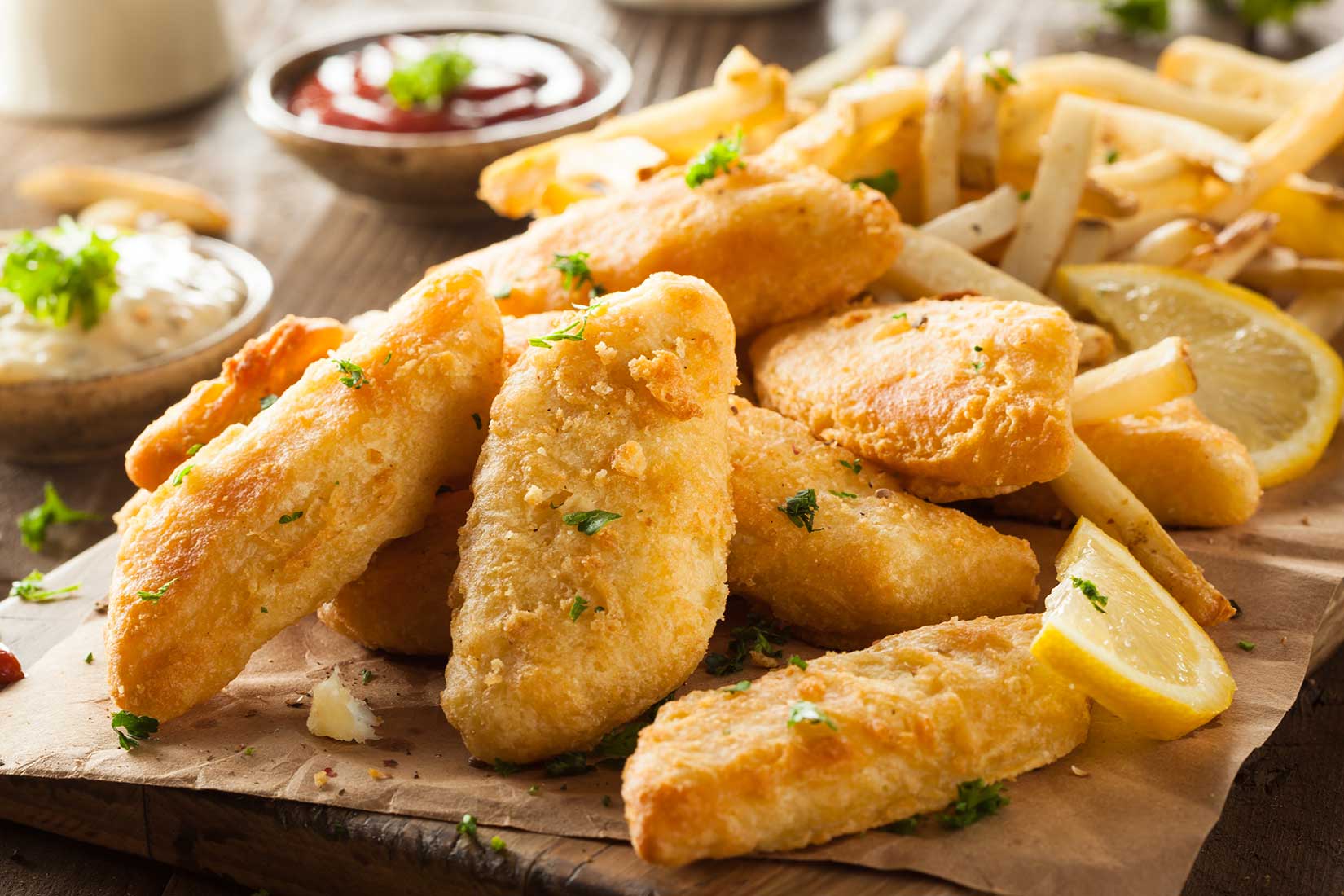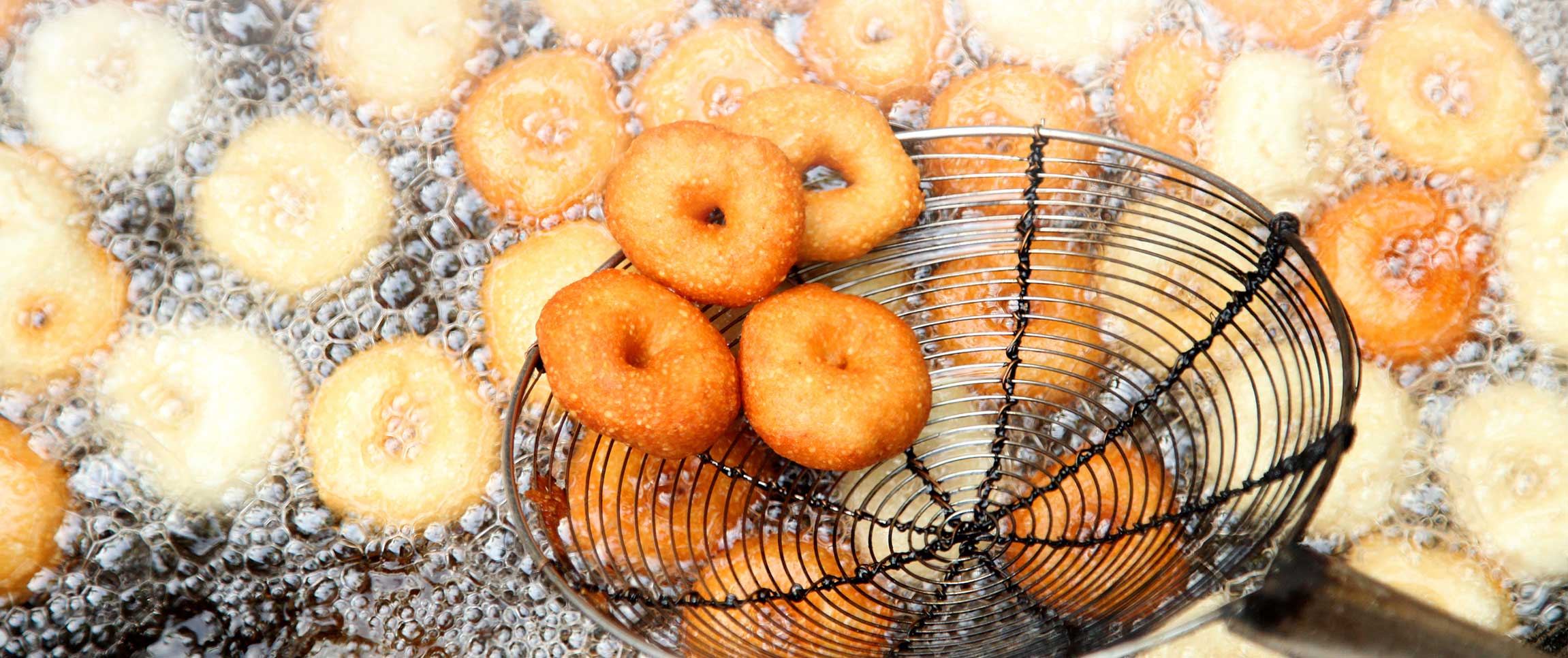Deep frying is considered a Dry Heat Method of cooking. It uses heat conduction and natural convection to transfer heat to food submerged in fat. Thus begins that golden brown delight known as deep fried food.
What Can Be Fried?
There is a wide range of food that can be deep fried and the one thing that all of these foods have in common is that they are classified as "tender." This means, from a culinary aspect, that it has little if any connective tissue. Examples would be: All seafood, young classes of poultry, all vegetables, all fruits, meat from the loin area of the animal, and of course...Twinkies.
Coatings
Food that is going to be deep fried is usually coated with a batter (wet coating) or a breading (dry coating). A chef will select a batter when they want a lighter, thinner style coating on the food. The chef will choose a breading when a thicker heavier coating is desired. These coatings are applied to the food being cooked in order to retain the moisture in the food and to stop the food from absorbing excessive amounts of the fat it is being cooked in. Making sure all items that are being fried are of the same shape and portion size is a must so that they will cook evenly and finish at the same time.
 The Methods of Deep Frying
The Methods of Deep Frying
- Basket Method: Use the fryer basket to hold food that has been breaded, if frozen or will not stick together during cooking.
- Double Basket Method: This is used for food that tends to float. So that this food will cook evenly, you submerge the food in one basket and weigh it down by placing the other basket on top.
- Swimming Method: This is used for battered items or food that tends to stick together. Remove both baskets and drop the food into the pool of oil to cook. The food is then retrieved by a spider strainer after it is cooked.
Fats for Deep Frying
Many options are out there. You want to select a fat based on smoke point (temperature at which a fat starts to break down), and flavor transfer to food. The smoke point you want begins at 300 degrees. Below is a list of fats with smoke and flash points. Some options include butter, lard, soybean oil, canola oil, peanut oil, and vegetable shortening.
Fryer fat is damaged by salt, water, overheating, food particles and oxygen. You should change your fryer fat when it becomes dark, smokes, foams or develops off flavors. Keep in mind that the cheapest oils are not always the most cost-effective. Many higher end oils last longer, and as a result can actually save you money over less-expensive counterparts. Our Brilliance® Premium Oils are designed to produce crisp, golden brown, full-flavored foods while offering high performance fry life.
Selecting a Deep Fryer
The most important factor in buying the right fryer for your restaurant is recovery time. This is the length of time it takes the oil to return to its original temperature after food has been cooked in the oil. If your menu has a lot of items to be prepared in the deep fryer, a quick recovery time becomes a very important need.



